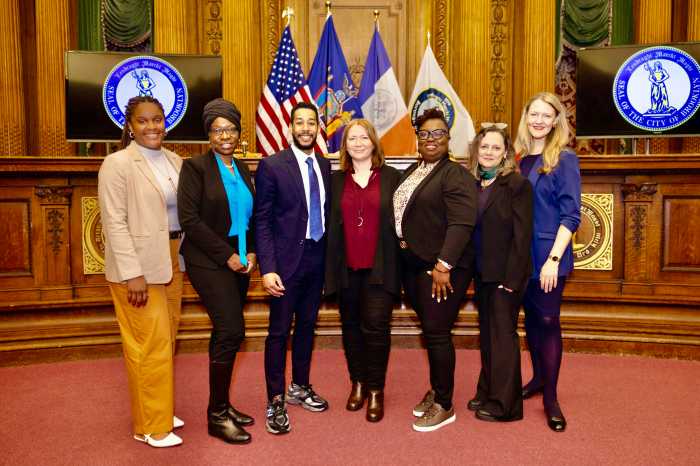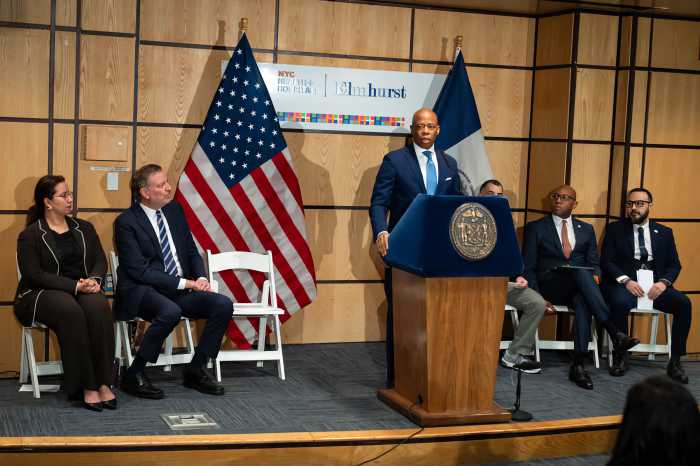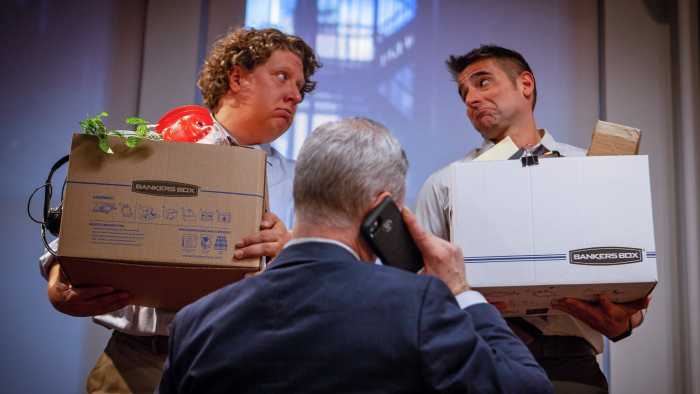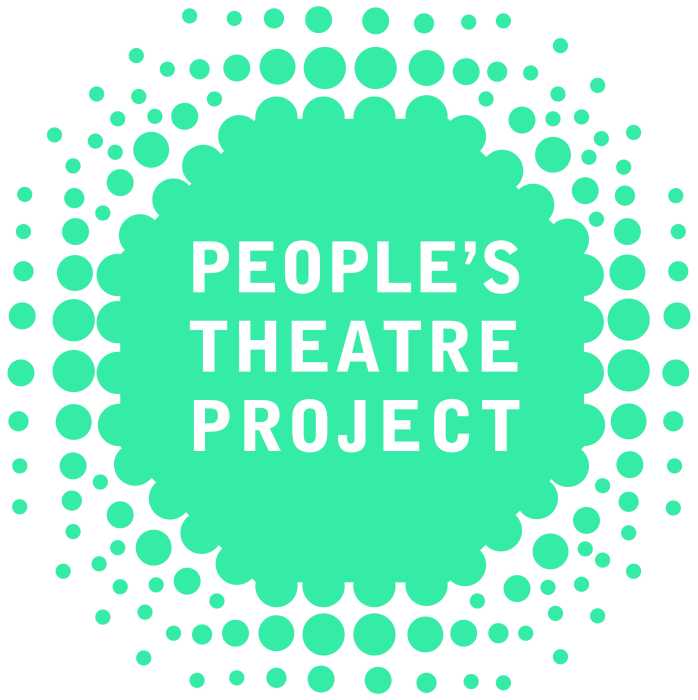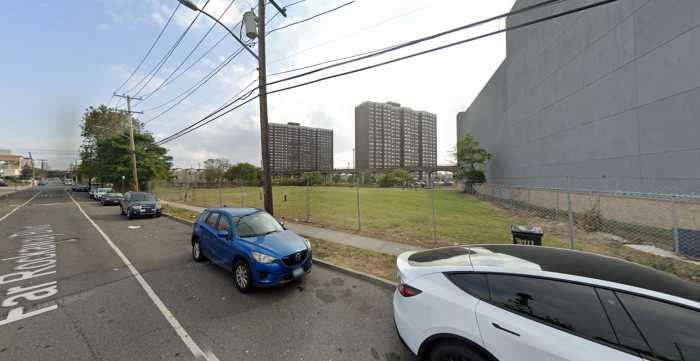In November 2011, a Brooklyn Medicaid Redesign Team (MRT) headed by Stephen Berger was appointed by the New York State Commissioner of Health to look into the viability of certain downstate hospitals and make recommendations.
In its report to the state health commissioner, a merger between Brookdale University Medical Center and Kingsbrook Jewish Medical Center was recommended.
This month, we spoke with Dr. Linda Brady, CEO and president of Kingsbrook Jewish Medical Center, a psychiatrist by profession, who developed the state’s first geriatric psychiatric unit in 1994. She became Kingsbrook’s first female, non-Jewish and physician-trained CEO in 1999 and during her tenure, she has used efficiency measures and strong board oversight to strengthen Kingsbrook’s financial situation.
Dr. Brady comments on the MRT report presented last November to State Health Commissioner Nirav Shah.
Celia Weintrob: The MRT Report suggests closing a third of Brooklyn’s 6,400 hospital beds. How does closing beds help hospitals save money?
Linda Brady: It helps if the space can be used for different purposes, and the money spent to update old hospital facilities and replace old equipment.
CW: The report also specifies the need for new primary care clinics. Can a closed floor or wing can be transformed into that kind of facility?
LB: With technology and medication, more things can be done, and quickly, on an ambulatory basis. The report talks about using health education, early detection and prevention, and primary care physicians (instead of an emergency room visit or hospital stay). Years ago, before reform,when Kingsbrook took over the primary care clinics of the St. Mary’s health system, the reimbursement was approximately 55 cents on the dollar. Due to the financial losses of these clinics, we were only able to keep one location, at Eastern Parkway & Utica, which still exists and is close enough for the clinic patients to also use the hospital when they require admission. We plan to invest in the outpatient, ambulatory network that exists at Brookdale, to create more open access locations, where you don’t need an appointment. For example, if it’s 9 pm, if you are registered at the clinic, you’d be able to walk in and be seen, and not have to use the emergency room.
CW: How are primary care clinics reimbursed versus hospitals?
LB: Between 2007 and 2010, Kingsbrook lost about $10,000,000 a year, between the hospital and the nursing home. Based on recent changes with Medicaid, outpatient services are much more manageable from a profit/loss perspective than previously. Although there is an emphasis on outpatient treatment, recently, the Federal government was threatening to cut hospital outpatient reimbursement to make it equal to that of an office based primary care practitioner. That proposal does not take into consideration a hospital’s more expensive organized labor costs, and hospitals are subject to many unfunded mandates and regulatory requirements that physicians in their offices are not. So cutting hospital reimbursement just doesn’t make sense.
CW: The report states that Brooklyn Hospitals are in much worse shape than those in the rest of NYC.
LB: I think hospitals in the outer boroughs have the same problems. And poverty is a key factor. Where there are pockets of impoverished communities, there are healthcare disparities, and the cost of care is higher.
CW: How is Kingsbrook doing with its reimbursements?
LB: Medicaid is always below our cost, with Medicare we do a little better. Kingsbrook, like many safety net hospitals in Brooklyn, has very few commercially insured patients. The big systems in Manhattan (and the hospitals in Brooklyn that are part of those systems), not only have more commercial business than we do, but can negotiate far better reimbursement rates. For example, Kings Highway Hospital in Brooklyn probably gets the same rates as Beth Israel in Manhattan because it’s part of that institution. Brooklyn Hospital gets perhaps not the same rates as NY Presbyterian but they have better negotiating power. Kingsbrook, as a stand-alone, community hospital, doesn’t have as much leverage to negotiate rates for the 20% of commercial business we do have. So it’s very hard to subsidize our government losses.
CW: The report suggests the formation of an advisory board that would have the ability to replace hospital management and their boards of directors. How do you feel about that?
LB:I think if there is a failing hospital that is asking for a bailout from the state, the state should have some ability to demand that the governance of that hospital be functional, and have a say in who is managing the facility. If someone was asking me for a large loan, I would want to feel confident in their ability to pay it back: what is your business plan, who are you, and can you execute it? It’s taxpayer money, why shouldn’t we want the state to look out for that kind of investment? But on the other hand, I don’t think that the state should be able to go into a well functioning institution and be able to randomly decide who should be operating it and what the governance should be. Many hospital CEOs feel comfortable with Governor Cuomo and (NYS Health) Commissioner Shah, but administrations change and people change. But under certain circumstamces, the state should have that authority. We are seeing that some of these boards are pretty dysfunctional.
CW: Take the situation with Wyckoff Hospital, for example, where the CEO and several board members were ousted due to mismanagement of funds, and conflicts of interest. And now the interim CEO says Wyckoff will not merge with Brooklyn Hospital.
LB: In 2007 when I was talking about Kingsbrook needing a partner, which might lead to our loss of control, it was a hard pill to swallow. I give my board credit that they were able, through a facilitated retreat, and through education, to really understand what the landscape was going to look like. They got over themselves and digested what their fiduciary responsibility was, and it was to the community. It wasn’t to their own existence as board members, it wasn’t to their being in control, it was how do we make sure Kingsbrook is here for the long haul to serve a community?
CW: Governor Cuomo says executive pay at organizations that rely on Medicaid is “startlingly excessive.”
LB: I think it would be hard to find the kind of talent we need if pay was capped at the level the governor suggests ($197,000, from the Federal Public Service Payscale). It’s also unclear exactly what “relies on Medicaid” means. Kingsbrook pays close attention to board governance issue, we have an outside attorney, an independent consultant and independent board members making compansation decisions. I don’t participate in the board compensation committee unless I am making recommendations about staff, I don’t participate in discussions about my own compensation. I think $197,000 to run a complex institution with a quarter of a billion dollars inrevenue, is not a realistic amount.
CW: The top executives at Staten Island hospitals have compensation packages of a million dollars. Do Brooklyn’s make as much?
LB: I think the average CEO’s compensation at Brooklyn’s 15 hospitals is less than that. There is a base salary, and benefits, and often a metrically driven bonus for performance. But I also understand the social justice issues here. I think the compensation question is in the court of public opinion. There is a big disparity in wages. $197,000 is a lot of money, that’s not lost on me. But I also feel that I can’t afford to make a statement like working for a dollar a year, it’s important that I am paid in a comparable way.
CW: if the mergers outlined in the Berger report do not take place, are any hospitals literally in danger of closing in the next 6 months?
LB: Brookdale is operating on a negative cash flow as we speak. Wyckoff is in similar circumstances, and Interfaith is struggling as well, but I am not as familiar with their situation.
CW: How do you feel about a Kingsbrook-Brookdale connection?
LB: Brookdale is a larger organization and offers a different mix of services. Kingsbrook doesn’t have OB; Brookdale does. Kingsbrook has a smaller pediatric component; Brookdale’s is larger. Brookdale does not have geriatric psychiatry; we do.They don’t have any rehab; we are well known for rehab. They have assisted living; we don’t (we have nursing homes). They have cardiac cath, we don’t.They have trauma, we don’t. So there really are a lot of complementary services and between the two, it really rounds out a continuum of care.
CW: How do you manage to keep Brookdale from pulling Kingsbrook down?
LB: We certainly cannot take over any of their liabilities, and the report states that their balance sheet would need to be cleansed. But it’s hard to project. Three years ago I might have told you we would be extremely vulnerable, but for the last three years we grew market share, we grew volume, we kept expenses under control, and our quality scores continue to attract people to Kingsbrook. I think the consolidation is a good thing.
CW: What kind of profit margin does Kingsbrook have?
LB: Last year we were in the black by one percent. For the last three years we’ve been in the black with a thin margin, not the three percent or more that we would like, to be really able to make investments in our plant.
CW: How do you plan to stay profitable?
LB: A lot of it is through efficiency. We have made early inroads in IT, which I see as cost avoidance. Our emergency room has an electronic record, we are digital (and very competitive) in radiology, have had a computerized physician order entry system since 1998, a pharmacy robot since the mid 1990s, and we have bed teletracking (like a control tower, so you know who has been discharged, when that bed is clean and ready for use). We’ve reduced the wait time for an ICU bed from 7 hours to less than three, and the time for an ER patient to get a bed is now about 7.5 hours, down from 14. We also adopted systems from manufacturing to streamline processes, just like Starbucks trying to reduce the number of seconds a barista takes to prepare a coffee drink. Our inventory storage units look like California Closets. Too much clutter in them and things expire, which wastes money. Plus no wasted time looking for supplies. We pay close attention to where the bottlenecks are and analyze them. For example, how do we reduce cancellations and delays in transport for radiological services? 1199 helped us measure and manage this, by working on processes, communications and now all have appreciation for one another’s jobs, time and efforts.
CW: Victory Memorial in BR was the most recent hospital closing in Brooklyn. How do you think things worked out there?
LB: The question is, have any people died as a result of that ER closing? I think it worked out OK.
CW: The Berger Report states that many Brooklynites are going to Manhattan for high end surgical services. What are those services an why not have them done in Brooklyn?
LB: In the shared service area of Kingsbrook and Brookdale, there are about 7000 discharges that do not go to either of our hospitals. Either they are going to other Brooklyn hospitals, or to Manhattan hospitals. Maybe if you work in Manhattan it’s convenient to go to a hospital there, and there is also the cachet of a Manhattan hospital. The report shows 17% commercial insurance (compared to Medicare and Medicaid) in Brooklyn and 27% of commercially insured going to Manhattan, primarily for surgery (cardiac, and some orthopedic). The report mentions the fact that the academic medical centers in Manhattan that have come into Brooklyn to develop feeder hospitals, and advises that has to change. They need to offer some assistance to the hospitals in Brooklyn that are struggling as a result.
CW: Does Kingsbrook’s proximity to SUNY Downstate and Kings County Hospital hurt you, help you, or not have much effect?
LB: Well, we are all competing for the same market share. If you look at us from an aerial view, we look like we should be one large campus. It’s crazy, we are within 10 blocks of one another. The most glaring fact is that Kings County and Downstate, are across the street from each other. We are all buying the latest expensive medical toys, we all have to have a CT scanner, MRI, lab facilities. We applied for a HEAL grant and were successful, and were going to create a regional laboratory for use by SUNY and Kingsbrook that did not materialize. One of the things I was surprised about in the report, was the recommendation that SUNY consolidate their campus at the LICH site, since LICH is at 50% capacity. I do not think that will happen.
CW: What is the coolest things about Kingsbrook?
LB: Many people say “no (profit) margin, no mission,” but I see it as the opposite: no mission, no margin. We really care about safety and quality. If we can’t deliver that, then we don’t deserve to be here, we could open up a fast food restaurant and make a whole lot more money.
Celia Weintrob is publisher of The Brooklyn Paper, a CNG publication.


